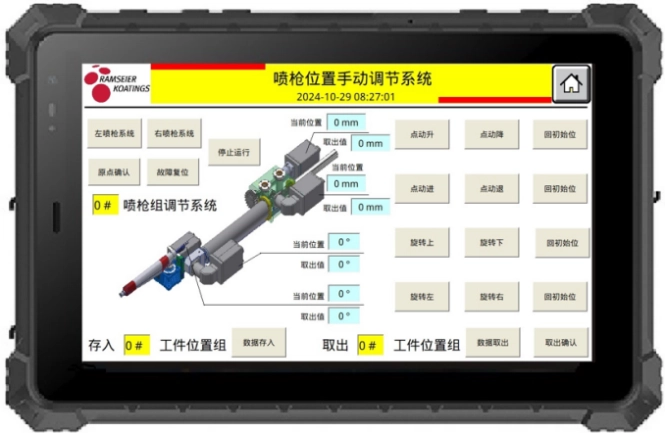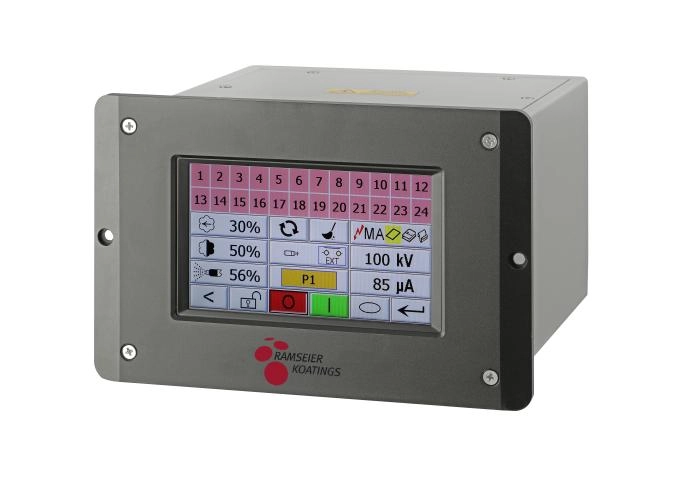Content Menu
● Introduction
● Historical Overview of Powder Coating Processes
>> Early Manual Systems
>> Emergence of Semi-Automated Equipment
● Technological Breakthroughs Paving the Way to Smart Systems
>> Automation and Robotics Integration
>> Real-Time Sensor Technologies
● Smart Data Systems in Powder Coating
>> From Data Collection to Data Intelligence
>> Integration with Manufacturing Ecosystems
● Key Components and Technologies of Modern Smart Powder Coating Systems
>> Intelligent Control Systems
>> Dynamic Path Planning and Powder Recovery
>> Artificial Intelligence and Digital Twins
● Impact on Industry and Sustainability
>> Enhanced Quality and Consistency
>> Environmental Benefits and Energy Efficiency
● Challenges and Future Trends
>> Implementation Costs and Complexity
>> Expanding to New Materials and Applications
>> Increasing Use of AI and IoT
● Frequently Asked Questions
>> 1. What are the main benefits of smart powder coating systems compared to manual ones?
>> 2. How does AI improve powder coating processes?
>> 3. What role do sensors play in modern powder coating lines?
>> 4. Can powder coating be used on materials other than metal?
>> 5. How do powder recovery systems contribute to sustainability?
Introduction
Powder coating has undergone a remarkable journey, evolving from entirely manual processes into intelligent, automated systems embedded with advanced data management capabilities. This transformation has revolutionized manufacturing industries by enhancing efficiency, quality, and sustainability in surface finishing. This article explores the chronological progression of powder coating data systems from manual to smart technologies, covering key innovations, practical applications, and future directions.

Historical Overview of Powder Coating Processes
Early Manual Systems
Initially, powder coating processes were fully manual. Skilled operators applied coatings using electrostatic spray guns and controlled curing ovens by manual adjustments. Human oversight was crucial for ensuring acceptable coating thickness, uniformity, and finish quality. However, the manual approach was labor-intensive, prone to inconsistencies, and limited in scalability.
Emergence of Semi-Automated Equipment
As demand increased, semi-automated systems emerged, combining manual labor with mechanized movements. Conveyor belts, electrostatic spray booths with fixed parameters, and thermostatically-controlled curing ovens improved consistency somewhat. Operators still had to monitor and adjust numerous parameters, but productivity and repeatability improved over fully manual setups.
Technological Breakthroughs Paving the Way to Smart Systems
Automation and Robotics Integration
The introduction of automation was a pivotal step. Electrostatic spray guns mounted on robotic arms could achieve precision spraying with repeatable paths—it eliminated human variability in applying coatings. These robotic systems enabled consistent powder application across complex geometries and hard-to-reach surfaces.
Real-Time Sensor Technologies
Incorporation of sensors such as film thickness gauges, thermal cameras, and optical sensors allowed real-time monitoring of critical coating parameters during application and curing. Sensors provided quantitative measurements for thickness, temperature uniformity, and adhesion quality, enabling operators (and later automated control systems) to make timely adjustments.
Smart Data Systems in Powder Coating
From Data Collection to Data Intelligence
Initially, data collection was limited to manual recording or rudimentary logging of production parameters. Modern smart data systems automate data capture from sensors and equipment, enabling comprehensive datasets detailing every stage from surface preparation to finishing.
Smart software platforms organize and analyze these data streams, generating real-time visualizations, trend reports, and alerts. This shift enhances traceability, quality assurance, and compliance with stringent production standards.
Integration with Manufacturing Ecosystems
Advanced powder coating data systems integrate seamlessly with broader manufacturing execution systems (MES) and supervisory control and data acquisition (SCADA) platforms. This connectivity supports end-to-end visibility and control, linking coating lines to plant management and enterprise resource planning (ERP).
Key Components and Technologies of Modern Smart Powder Coating Systems
Intelligent Control Systems
Modern powder coating lines employ software-driven control systems that dynamically adjust spray parameters, conveyor speeds, and curing profiles based on real-time sensor input. Predictive algorithms can anticipate defects and recommend corrections before quality issues arise, leading towards a zero-defect production model.
Dynamic Path Planning and Powder Recovery
Laser or contour scanning technologies enable robotic spray guns to adjust trajectories in real time, matching the exact shape of each workpiece without the need for elaborate programming. Meanwhile, automated powder recovery systems reclaim over 95% of overspray powder, minimizing waste and reducing environmental impact.
Artificial Intelligence and Digital Twins
The most cutting-edge systems utilize AI to simulate coating processes through digital twins—virtual replicas of physical systems that allow experimentation and optimization without physical trials. Machine learning models predict coating outcomes and optimize settings for varying materials and geometries.
Impact on Industry and Sustainability
Enhanced Quality and Consistency
Automated, sensor-integrated powder coating systems guarantee uniformity and adherence to specification across large production volumes. The reduction in human error and continuous feedback loops ensure superior, repeatable finishes.
Environmental Benefits and Energy Efficiency
Powder coating is inherently more environmentally friendly than liquid coatings, eliminating solvent emissions. Smart systems optimize curing oven energy consumption and maximize powder reuse, supporting sustainable manufacturing practices and reducing carbon footprints.
Challenges and Future Trends
Implementation Costs and Complexity
While the benefits are substantial, initial investment in automated smart powder coating systems and required infrastructure can be significant. Training workforce and integrating legacy equipment pose practical challenges.
Expanding to New Materials and Applications
Ongoing research aims to broaden powder coating applicability beyond metals to plastics, composites, and other substrates, requiring adaptive data systems to manage new process parameters and quality metrics.
Increasing Use of AI and IoT
Future developments will likely see deeper integration of AI, machine learning, and Internet of Things (IoT) devices to create fully autonomous powder coating ecosystems. These systems will self-optimize for quality, speed, and resource use with minimal human intervention.
Frequently Asked Questions
1. What are the main benefits of smart powder coating systems compared to manual ones?
Smart systems offer enhanced coating consistency, higher throughput, better traceability, reduced waste, energy savings, and improved environmental compliance compared to manual powder coating.
2. How does AI improve powder coating processes?
AI enables predictive maintenance, real-time parameter adjustment, and defect prediction, helping achieve near-zero defect rates and optimizing performance without manual programming.
3. What role do sensors play in modern powder coating lines?
Sensors measure parameters like coating thickness, temperature, and curing uniformity in real time, providing critical data for process control and quality assurance.
4. Can powder coating be used on materials other than metal?
Yes, advances in powder formulations and curing methods, including UV-curable powders, have extended applications to plastics, composites, and some wood products.
5. How do powder recovery systems contribute to sustainability?
By reclaiming and recycling over 95% of unused powder, recovery systems reduce material waste and environmental pollution, lowering manufacturing costs and supporting green initiatives.

[1] https://inspenet.com/en/articulo/batch-powder-coating-system-fundamentals/
[2] https://patents.google.com/patent/CN115600586B/zh
[3] https://www.hinahcoatingline.com/news/under-the-industry-4-0-era-how-automated-powder-coating-revolutionizes-manufacturing
[4] https://patents.google.com/patent/CN108694160B/zh
[5] https://coatingai.com/blog/the-history-and-evolution-of-the-powder-coating-industry/
[6] https://blog.csdn.net/2401_84911273/article/details/138954445
[7] https://www.bolair.ca/blog/smart-technologies-powder-coating/
[8] https://patents.google.com/patent/CN114328826B/zh
[9] https://www.linkedin.com/pulse/manual-automatic-powder-coating-systems-market-2026-deep-qaeke/
[10] https://blog.csdn.net/weixin_45386937/article/details/113763997
Hot Tags: China, Global, OEM, private label, manufacturers, factory, suppliers, manufacturing company










































 .
. 